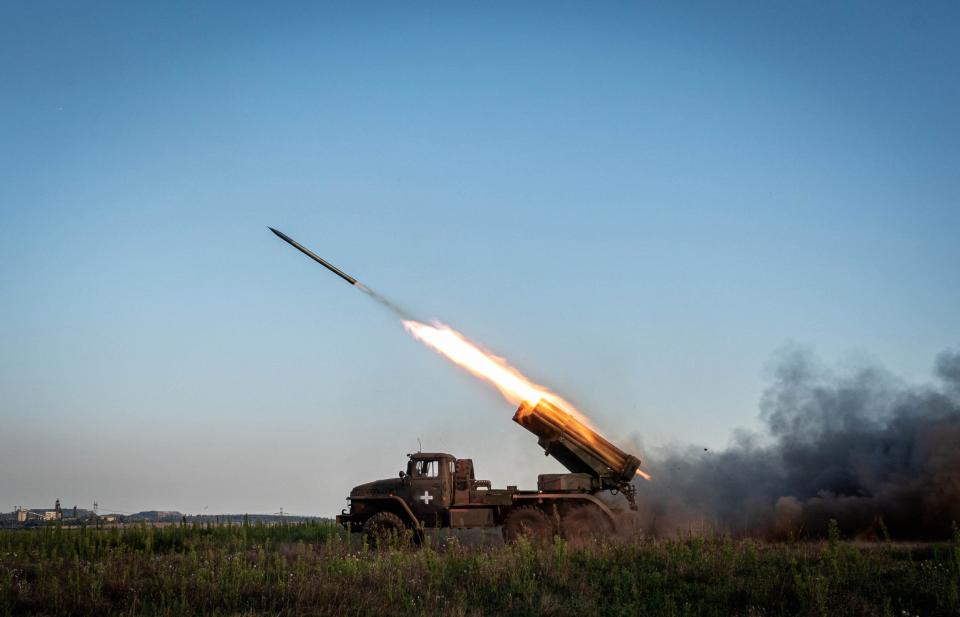Here’s what Ukraine needs in missiles, shells and troops to win. It’s completely doable
After two years of the Russia-Ukraine war with still no end in sight, Nato members have begun asking what it will take to turn the tide in Ukraine’s favour.
A discussion paper published by the Estonian Ministry of Defense tallied the materiel likely required. Ukraine needs defense against missiles and aircraft most of all: the Estonian plan states that 4,800 anti-air missiles are needed annually. Meeting that number would require the entire annual production of anti-air missiles from the United States (3,600) and the remaining Nato production (estimated at 1,000).
That’s not all – even more air defenses are needed to defend Ukraine’s cities and troops: At Russia’s current attack rates, that’d be roughly 7,500 additional missiles per year. That’s attainable, eventually. Western arms manufacturers may have the capability to annually double their output to achieve such numbers, but Nato would still dip into its stockpiles and have to look for external sources of armaments to backfill until production matched the need.
Ukraine’s offensive needs are more difficult to quantify. Estonian analysts pegged the artillery demand at about 2.4 million shells, which Nato can eventually meet with some additional US support and external sources.

The annual demand for long-range rockets was estimated to be 8,760. That was, however, “the minimum to defend”; going on the offensive could easily require triple that number. The United States is the only Nato country that builds these long-range rockets, called the Guided Multiple Launch Rocket System. American production will exceed 14,000 in 2025, which is sufficient to meet Ukrainian defense demands. Nato has substitutes, but those require fighter jets to deploy.
Deep-strike munitions such as cruise missiles fall into a separate category. Ukraine has been given limited numbers to strike key targets. Further, many high value targets are inside Russia’s borders. Until sufficient quantities of deep-strike munitions are used in an unconstrained manner including into Russia, it is impossible to judge the level of need. But in terms of supply, we do know that Nato has previously procured thousands of long-range cruise missiles and the US procures 400 to 700 per year.
A rough annual cost estimate for all these munitions ranges from £16 billion to £28 billion to fund a Ukrainian defensive posture, and £43 billion to £57 billion when on the offensive. That doesn’t account for the cost of procurement, operations and sustainment of platforms.
It also doesn’t include the training and equipping of the massive manpower required if Ukraine is to push Russia back to the 2014 borders. Recent RAND reports determined that it would take between 14 and 21 Nato-trained and equipped brigades to expel a Russian force from the Baltics. Training and equipping a force of that size or larger over a two-year period is possible – if Ukraine can recruit the manpower.
With new Russian troops arriving at a rate of 25,000 to 30,000 per month, Ukraine needs to inflict 1,000 casualties a day to prevent any build-up in Russian forces. That is the current daily average, and were it not suffering from munition shortages, Ukraine likely would already be degrading the Russian presence in Ukraine.
Long-term materiel support for Ukraine from Nato along the lines of what the Estonian paper proposes is feasible, under the right conditions. Indeed, if the plan is to push for a defensive stalemate akin to Korea, the Estonian plan is sufficient even without US involvement, so long as European Nato has no restrictions on stockpile drawdowns and purchases what it needs from any global source.
But the path to victory is far more costly. If you wish to fully expel Russian forces by putting Ukraine on the offensive in the next two years, US support and broad Nato investments exceeding the Estonian plan will be required.
Michael Bohnert is an engineer at RAND, a nonprofit, nonpartisan research institute. His research focuses on defense technology, acquisition policy, and industrial base management.


